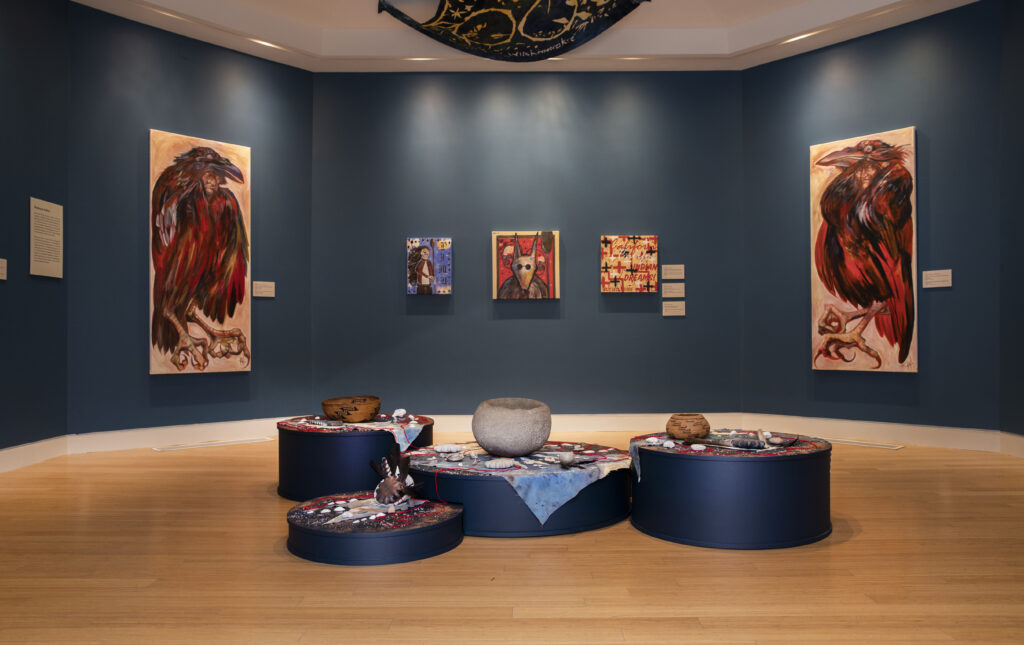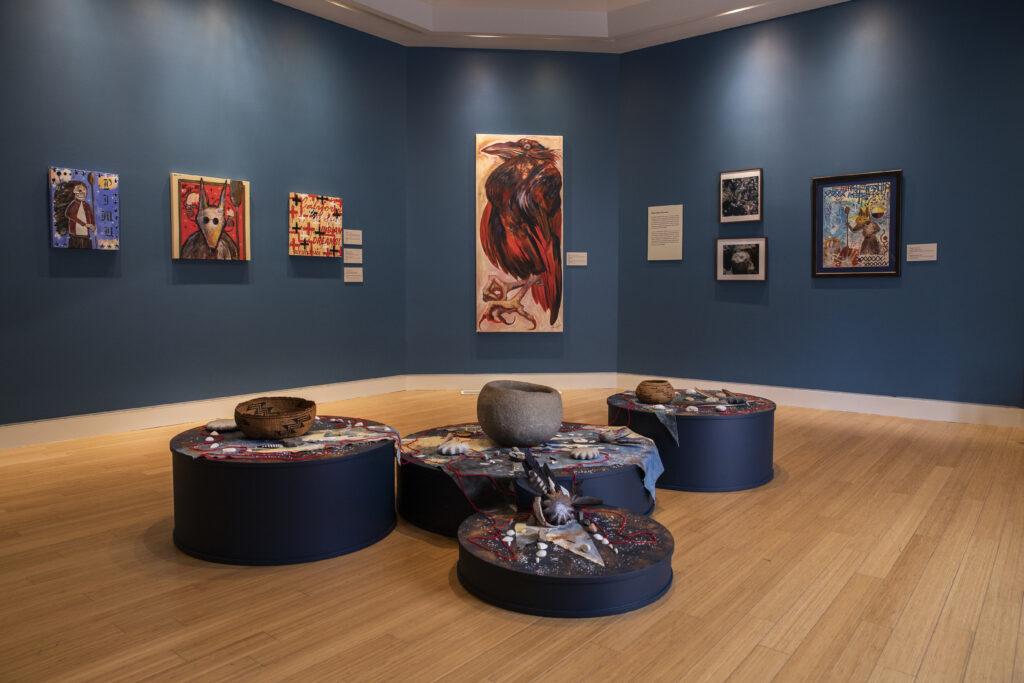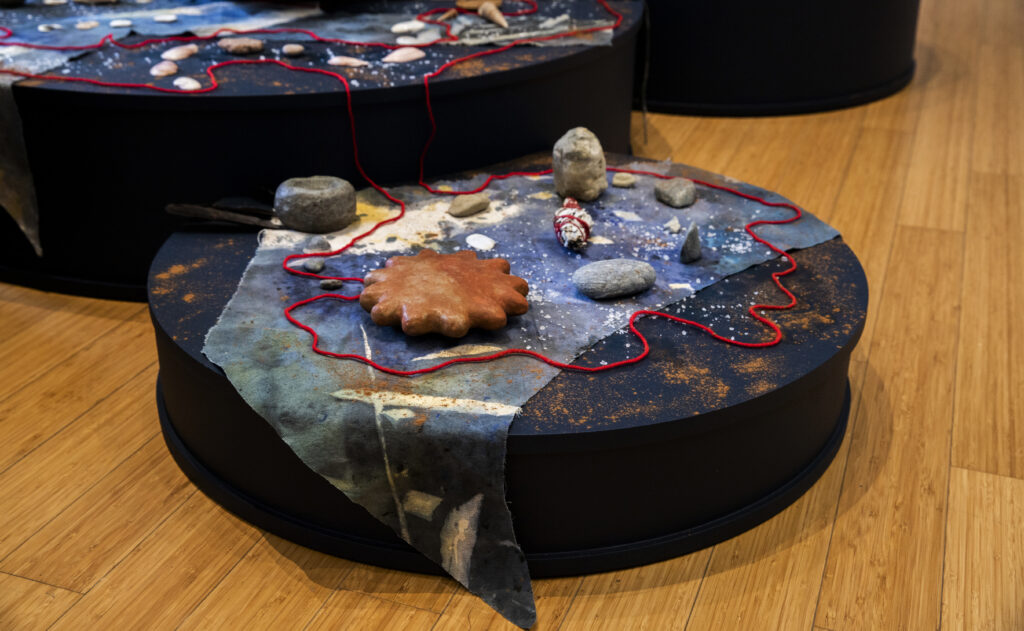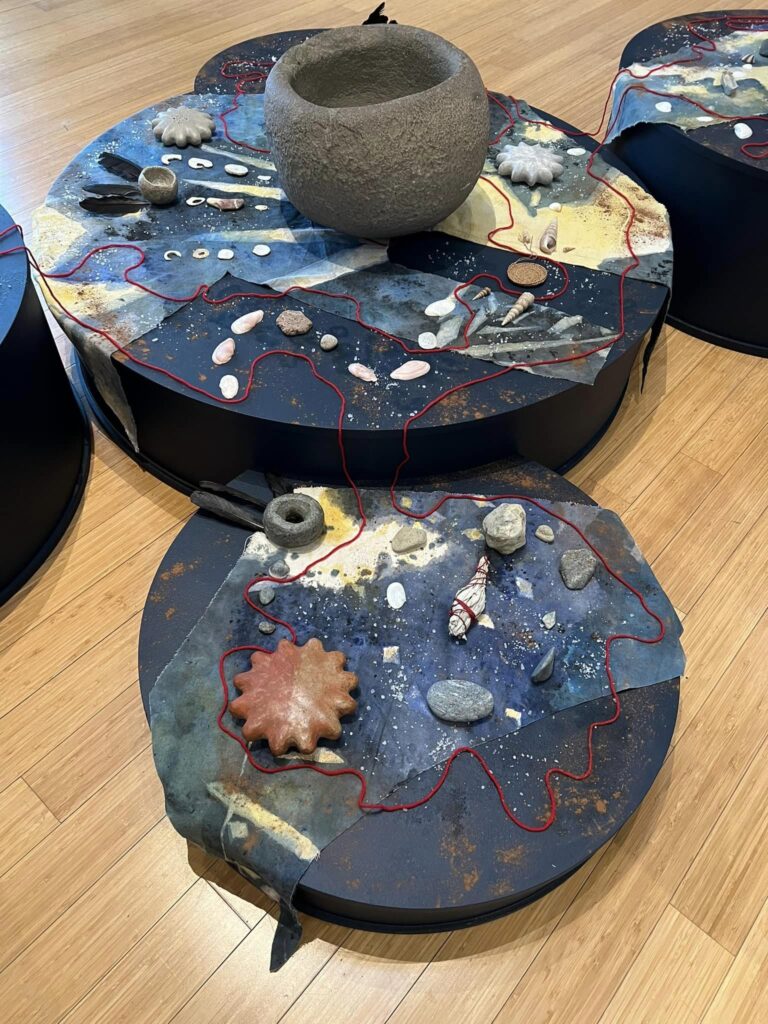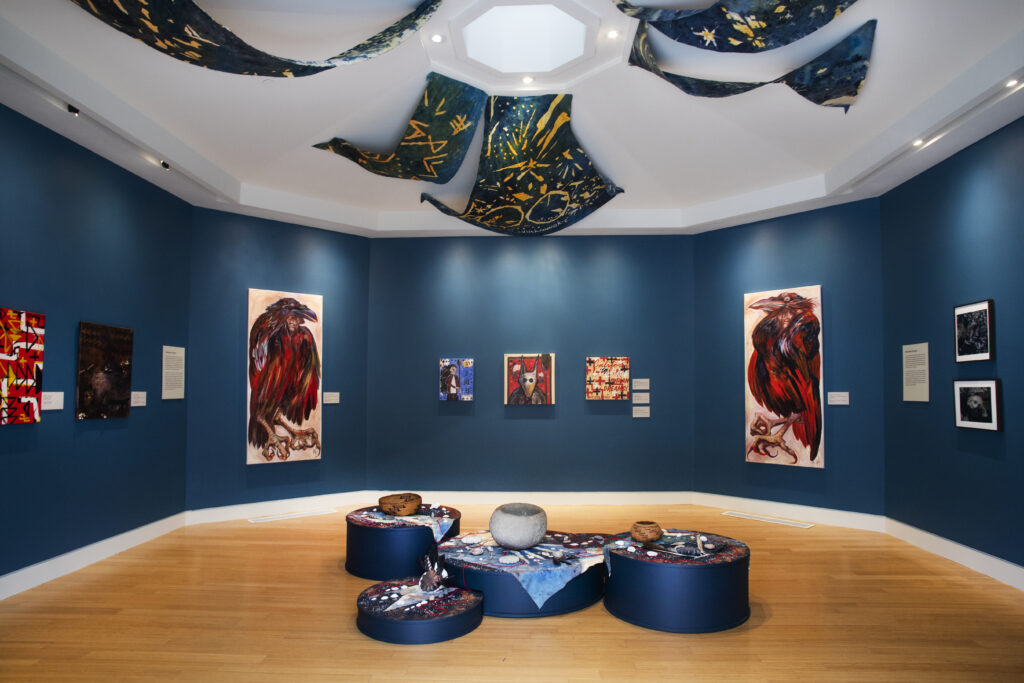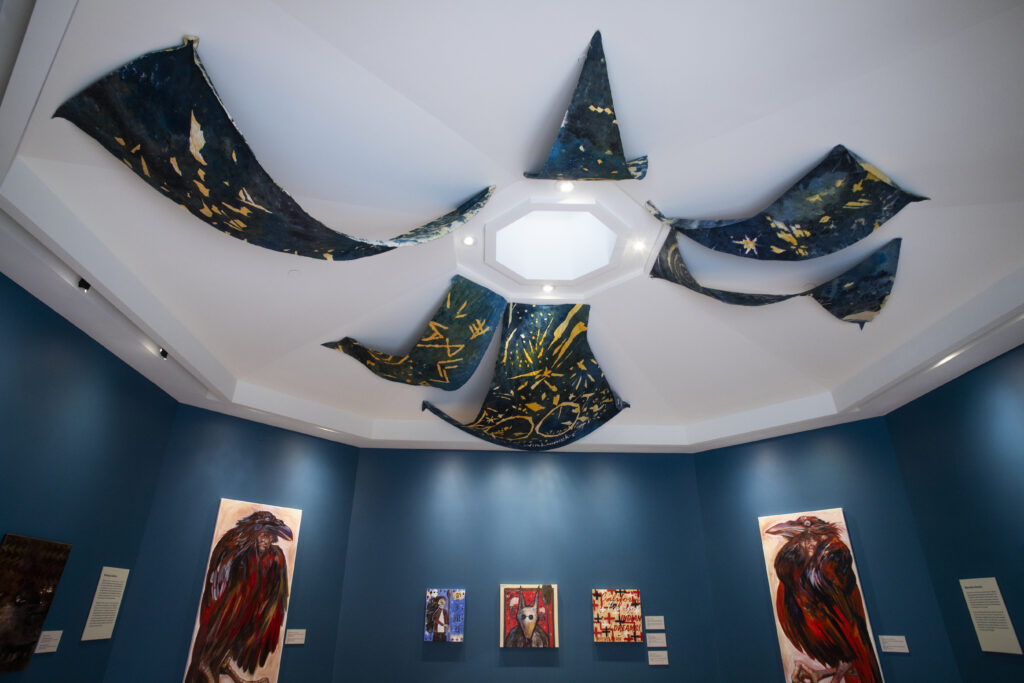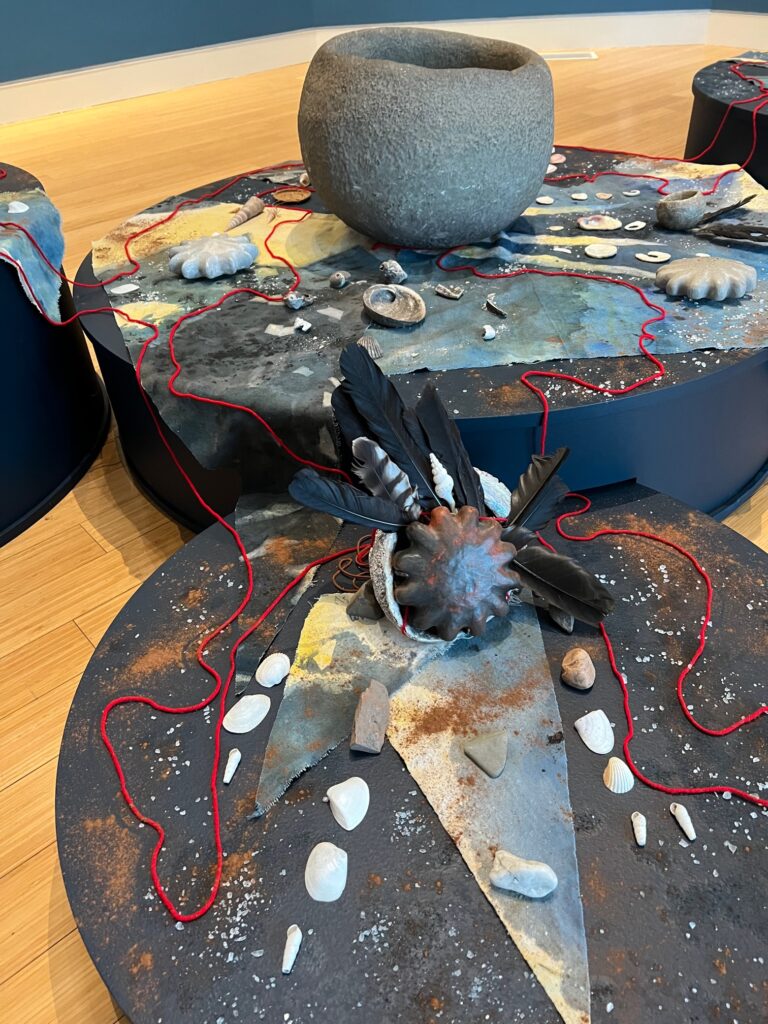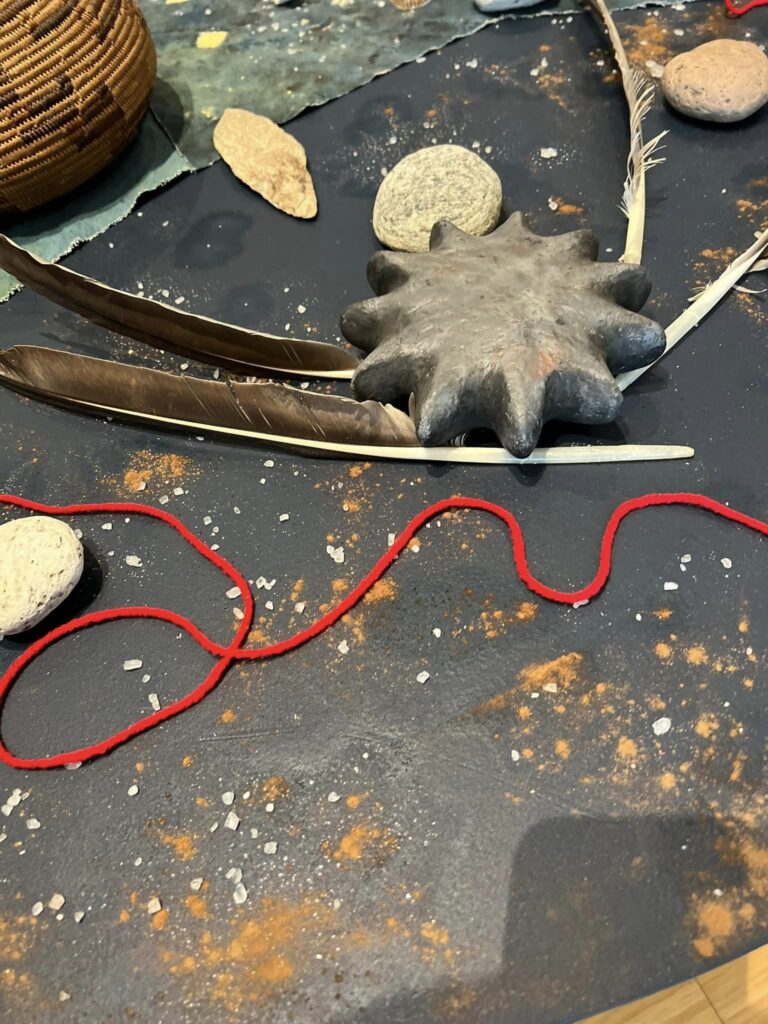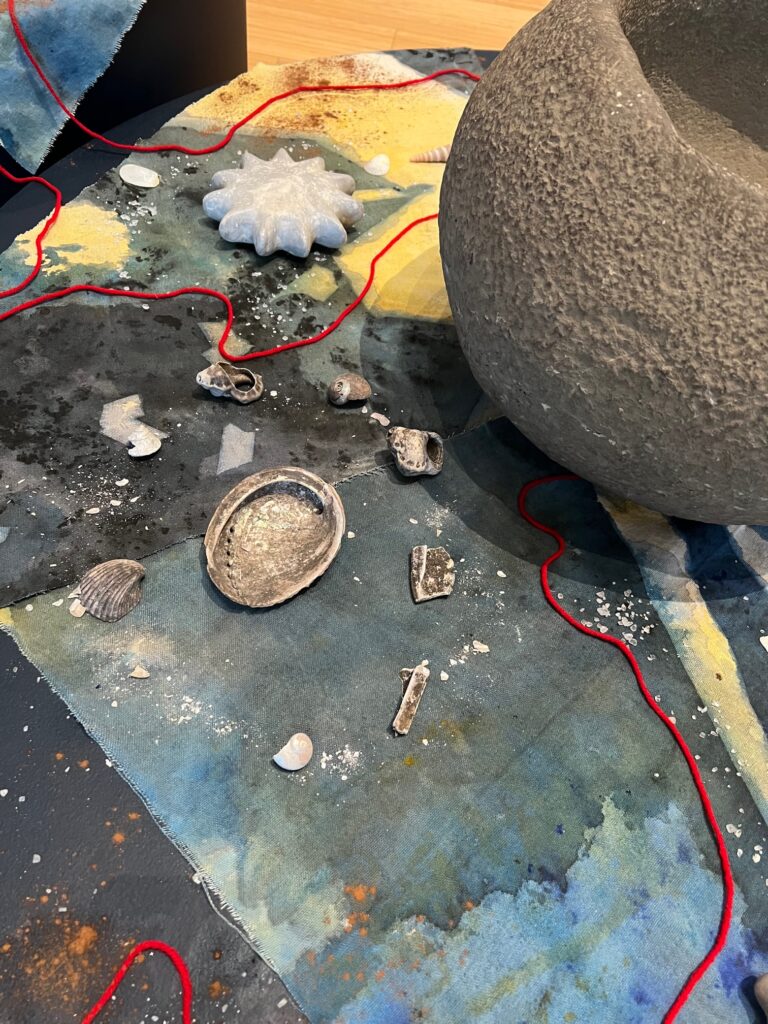Glass and sculptural artist Scott Slagerman is opening the new Hyde Park Gallery LA, an exciting addition to the Los Angeles art scene and one he calls “spontaneous…I had no intention of making a gallery when I bought this building,” he explains. “I was renovating the space for my studio, and realized the front area was the perfect space for a gallery and showroom.” Slagerman says Los Angeles has a dearth of new spaces for young, talented artists, and a lack of exhibition locations for glass artists in particular. Slagerman works in metal, wood, and glass, and has sculpture in the permanent collection of the Decorative Arts Museum in Paris.
For the first exhibition at his new gallery, Slagerman is presenting a solo show from glass artist Nao Yamamoto, titled The Altar. The artist appeared on season 2 of the Netflix series Blown Away. At Hyde Park Gallery LA, her exhibition is highly pertinent for the space: the renovated building was once a church, and Yamamoto’s work is placed where a religious altar once stood.
“Nao represents a very major part of the LA glass scene, so it is exciting to have her here. She’s never shown in Los Angeles before,” Slagerman relates. “Her art fits the location perfectly.”
Yamamoto says her work for The Altar is comprised of three major wall installations with multiple pieces involved in each. “I have been shifting my ideas to think about the function of art, and why it exists. I am here to create an experience where the viewer is a real part of the show, where the viewer completes the show.” She adds, “I was really focused on creating a whole new coherent space, making new work made just for the gallery.” The artist encourages viewers to experience their sixth sense, and engage a connection with inner peace. Works include lustrous lotus flowers, emerald leaves, natural crystals, and representations of candle flame, as well as geometric pieces that evoke representations of the “third-eye” and cosmic intuition.
While subsequent exhibitions will focus on the Los Angeles area glass art scene, the gallery will also feature exhibitions that include other mediums and artists as well, according to Slagerman. The LA-native asserts that glass art has a history in the city, and that the form is part of a burgeoning community. But with glass galleries of the past such as the Kurland-Summers Gallery long gone, it’s more than time for a new exhibition space.
“Our plan is to help people rediscover this under-represented and under-appreciated art form for both established and up-and-coming artists,” he says. The gallery will host artist receptions, art talks, special opening weekends, and tours of Slagerman’s own glass studio.
Born in Japan and working in the U.S., Yamamoto creates artwork that’s inspired by both the beauty of glass itself and the artist’s passion for nature. Her rich, colorful, and varied textures offer a resonating beauty that goes beyond the material of glass, creating inspirational works that soar with varied patterns and glowing light. For this exhibition, her works inhabit an almost ethereal, spiritual approach to glass work.
The Altar will open March 4th, with gallery hours from 11 a.m. to 9 p.m.; e 1-7 p.m. Sunday, March 5th, and 11-5 Tuesday-Friday. On Saturday, March 11th, hours are 11- 7, and a closing reception for Yamamoto’s work will be held from 5 – 9 p.m. on Sunday, March 12th.
Hyde Park Gallery LA is located at 2618 W Florence Ave, LA, CA 90043 in mid-city. For more information visit https://www.hydeparkgalleryla.com or call (310) 413-6493.





















